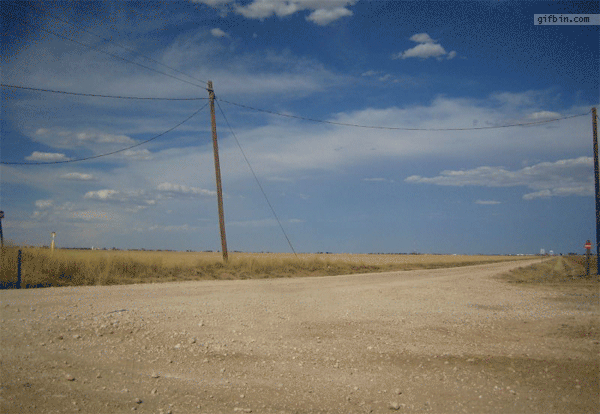
When your business launched its website, you had high hopes for the swarms of customers it would bring in. There would be buzz, everyone would share it, your contact form would be aflame with activity.
So, why isn’t that stuff happening?
Assuming your site is fully functional and the contact form isn’t broken (never hurts to double check), it’s tempting to blame a website’s poor performance on its visual design, page layouts, choice of platform, etc, etc.
The website isn’t bringing in customers, so it must be a problem with the website itself, right?
And if you have a problem with your website, then the solution must be a redesign! Any number of freelancers, boutique creatives shops, and digital agencies will be thrilled to propose a beautiful new site for you, built on the awesomest, most cutting-edge technologies.
Sure, it’ll cost more than you wanted to spend, and it’ll take several months, but if you can just hang in there until then, that new design will start generating leads, and the site will pay for itself.
So the months wear on, and the budget expands, and one day you finally present the efforts of all your hard work to the world. And then?

The floodgates don’t open. The state-of-the-art contact form is as quiet as ever. The bounce rate is the only thing trending upwards.
How could this be? Your site has gorgeous design, it’s built on the best platform, and it describes exactly what you do! Why isn’t it working?
Maybe what you have isn’t a website problem at all.
Those symptoms are the telltale signs of a strategy problem.
The Symptoms of Brand Strategy Problems
At first glance, customers are likely to treat your website with all the respect of a common billboard. And based on a lifetime of watching commercials, listening to ads on podcasts and the radio, and seeing actual billboards, we know we’ll only give our attention to advertisements for a few seconds before we judge them and decide to move on (or not).
We’re able to make those decisions quickly because they’re largely rooted in emotional reactions rather than deep analysis.
If your website isn’t doing a good job of connecting emotionally with customers, you’ll likely see those split-second judgements result in behaviors like:
- High bounce rates (I must be on the wrong site)
- Low conversion rates (I don’t want what you’re offering)
- Low time on site (Why am I still here?)
- Lack of social shares (Why would I ever send this to my friends?)
- Minimal organic traffic (I can’t even find you)
And these are just the lowest-of-low hanging fruit for your analytics. If you’re doing anything with ecommerce or have a digital product, there will be even darker signs of strategy problems lurking.
So how can you do a better job of maximizing those first few seconds of interaction, while also telling a compelling story so your customers get engaged?
To answer that, you’ll need to take a step back and look at the bigger picture of your brand strategy.
The Heart of Brand Strategy Problems
Your website can never be better or more clear than the brand thinking behind it.
So poor performance in your website is likely to be a reflection of some gap in your brand strategy.
For example: your messaging may not highlight the benefits you deliver to your customers. Or your site may be focused on the features of your product or service rather than hitting on a specific customer need. Or the purpose and vision of your company may be missing altogether in what you’re presenting.
While you’re seeing those issues through the lens of the website, their root causes come down to your strategy. Specifically, how well you have defined and articulated your purpose, customers, competition, offering, brand and marketing — and how well these things fit with one another.
Even if you had the world’s best team of copywriters, designers, and developers at your beck and call, none of them will be able to fix these issues simply by redesigning your website. The most a website can do is to communicate a great strategy clearly. It can never be a substitute for a clear strategy.
Long story short, you can’t expect a new coat of paint to make your car run better — and it definitely won’t drive the car for you.
Switching from “Website Redesign” to “Brand Strategy Redesign”
If you’re considering a website redesign you’ll obviously want it to make a real difference with your business.
Consider these five questions to determine whether your strategy needs some attention first:
- In a big picture sense, why does your business exist? (Purpose)
- How well do you really know your customers’ needs and priorities? (Customers)
- Does your company own a unique strategic position compared to your competitors? (Competition)
- Do you meet your customers’ most important needs in a unique way? (Offering)
- Do your customers (and your team) know exactly what you stand for? (Mission)
If you feel completely solid on those five, then you can ask a key question related to your marketing efforts — e.g. your website:
6. Are you connecting with your target customers by tapping into their emotions? (Messaging)
Using the Answers to Your Brand Strategy Questions
You can see how coming up with a good answer for that last question about marketing depends on solid answers to all of the previous five. You can’t make a meaningful connection with your customers without:
- Clearly knowing why your business exists
- Understanding your customers’ needs and priorities
- Seeing where your company fits among the other options your customers have available
- Creating a unique fit between your offering and your customer
- Being able to show your customer what your brand stands for
These questions and answers aren’t about the functional details of a typical website redesign project. It’s not about the number of pages your site has, what platform it’s built on, how it looks in different browsers, whether you have a cool image slider at the top, or even how much you paid for it.
But hopefully these types of questions start to hit on the reasons you felt you needed a new website in the first place.
If you could answer those questions confidently, would you still need a totally new site? Could some of the issues be fixed through simpler updates fueled by better strategic inputs?
Strategy helps you get to the root causes of these important issues (for your website and beyond), instead of merely treating the symptoms. Then, if it turns out that a new website really is needed, you can be sure you’re putting your time and money to good use.
A Strong Brand Strategy Makes Website Design Faster and Easier
It might be daunting to think, “Great, now I need to work on my brand strategy and my website,” but the truth is that the benefits of the time you put into your strategy extend far beyond your website.
This investment is about making your business stronger and more successful as a whole. Your website can’t help but benefit from that — and so will everything else you do.
By the time you’ve thought through all the core areas of your strategy and how they connect, channeling that into a website becomes extremely clear.
You’ll be equipped to make informed decisions around what your site may or may not need, and you’ll know everything that goes into it will support the goals of your business. You’ll be proactively leading the redesign from a place of business goals, rather than reacting to fancy designs or technology trends.
Want Help With Your Brand Strategy?
If you’ve ever felt like defining a strategy for your business was too difficult, time consuming, or only for big corporations, check out our Brand Guidebook process to see how it can help get your strategy in shape quickly and easily.
And if you want more articles, insights, and a free workbook that can help improve your brand, sign up below.


